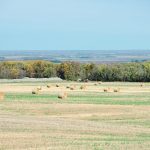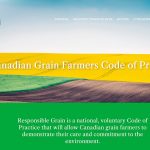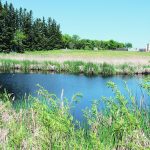WP100 Research

Producer bucks the trend with a mixed farm

Equipment manufacturers focus on technology
Major implement companies face high-tech future as they wrestle with automation, autonomy and precision agriculture
Images of autonomous machines working on their own in fields can easily grab the attention of early-adopter producers, especially those facing a labour crunch. They also make impressive headlines and brand announcements. However, even though several concept, prototype and even a few production machines have appeared on the scene, nearly all producers will again still […] Read more
Developing pulses particular to the Prairies
Ana Vargas and her U of S team are working to develop disease resistance, tall red lentils and drought-resistant fababeans
CALGARY – A scientist who seeks to breed lentils and fababeans that are a better fit for the Canadian Prairies in an era of climate change sees a bright future for the region’s pulse farmers. The ability of such crops to fix their own nitrogen means they require less fertilizer and provide high levels of […] Read more
Dwindling rural populations called global issue

Grain sector plans new sustainability approach

Taking a close look from a long distance
Satellite data and machine learning are yielding powerful tools for crop management in Western Canada
SASKATOON — Information is power, and by putting that power into farmers’ hands, Steve Shirtliffe wants to help Western Canada continue its record of world-leading innovation. “My vision is that we build a digital agriculture economy here in Saskatchewan,” he said. “ We’ve done it before. Where did no till come from? Where did people […] Read more
Company deploys million worms to improve soils
Annelida Soil Solutions of Alta. recently received an innovation award for its soil amendment that is based on worm castings
CALGARY — An Alberta company wants to turn poop from about 80 million worms into a natural superfood for the soil. “Essentially, what we’re doing is using Mother Nature and creating a soil microbiome through our technology,” said Jamie DePape, co-founder and director of sales for Annelida Soil Solutions Ltd. Related stories: Regenerative ag reaches […] Read more
Research priorities worry farmers

Increasing flax yields faces genetic challenges
Researchers who want to optimize flax for seed production must backtrack on 8,000 years of agricultural development
SASKATOON — When Bunyamin Tar’an introduced a new flax variety, CDC Esme, to an audience of farmers, the question from the floor was immediate: what about the straw? “Similar to (CDC) Glas,” he said. “Almost all the plants have similar structure. A lot of the challenge with flax is that the straw is really, really […] Read more





